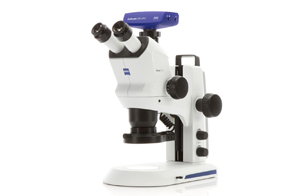Sample Recovery
Unlike TEM, in the scanning electron microscope (SEM) the electron beam scans the surface or fracture edge of a sample and gives us an image of the topography. All kinds of organic and inorganic materials can be studied in the SEM. However, the sample size depends on the sample chamber and the preparation facilities. A biological sample, which has to be elaborately dehydrated, should have a small volume, whereas a material sample can be much larger (e.g. ZEISS EVO 25 with smartEDX, max. sample height 2 cm). For the right size, the inorganic materials need to be sliced and sawed. Other materials have to be cut or concentrated using a centrifuge. Live cells are cultivated on cover slips, fixed and afterwards glued with the glass bottom on SEM sample plates. However, the most important prerequisite for all preparations is that they are not outgassing and conductive. Only then the sample will be vacuum-stable.














